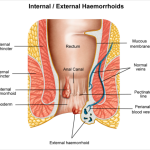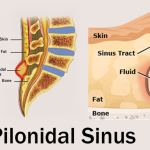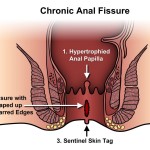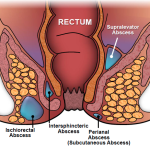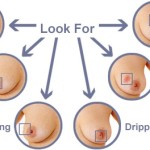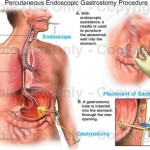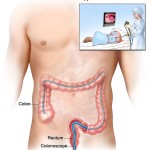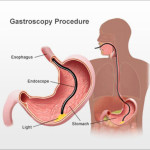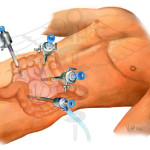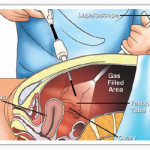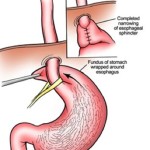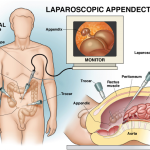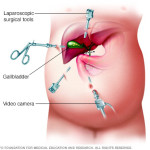Laparoscopic Colon surgery for diverticular disease and cancer
Overview | Colon Cancer | Diverticulitis | Procedure | Colostomy | Risks
Overview
For some patients, laparoscopic colon surgery is better tolerated in comparison to open surgery. While a small percent of patients undergoing laparoscopic colon surgery have to be changed to an open operation, the patients whose surgeries are completed by these minimally invasive techniques can enjoy a quicker recovery, less pain and a faster return to their normal life. The laparoscopic technique shares some of the same risks of any bowel operation, yet many studies show benefits of the laparoscopic technique.
If you or someone you know is faced with colon surgery and you want to consider the laparoscopic option, use our resources to find an experienced surgeon. If it is an emergency and you do not have ready access to an advanced laparoscopic surgeon, there is nothing wrong with open surgery. Do not hesitate, if you have the time, to ask your primary care physician or gastroenterologist to refer you to a qualified surgeon who will be glad to communicate with them about the plans and results of your treatment.

Colon Cancer:
Some tests, such as a CAT scan(detailed Xray), may be ordered to see if there is any visible sign of the cancer having already spread. This could affect the decision for surgery as the finding of “metastasis” (spread) severely decreases (not to zero) the chance that the cancer can be cured. When surgery is done, the section of bowel with the tumour is removed along with some surrounding tissue. “Lymph nodes” will be checked for signs of cancer as this would be evidence that cancer cells had indeed already spread elsewhere. Other forms of “adjuvant” (additionally helpful) treatment may be recommended before or after the surgery.

Diverticulitis:
Diverticulitis is a condition which may be caused by too many years of not enough fibre (roughage) in the diet and the colon squeezing so hard that pockets form. While most patients with diverticulosis (up to 50% of people by age 70) have no symptoms, each of these pockets can act like an appendix and can get infected, or even rupture.
The symptoms may range from vague, left lower abdominal pains with diarrhoea, constipation (or both); to severe pain, peritonitis or bowel blockage. In patients with mild symptoms, adding more fibre to the diet, with fruits, vegetables and whole grain cereals or with a supplement (such as fibre drinks), may help. It may also be necessary to undergo testing, such as a barium enema or colonoscopy, to exclude other possible conditions.
More severe symptoms usually respond to antibiotics, sometimes requiring administration through a vein in the hospital. People who get bad attacks again and again or have severe attacks, require surgery. Like colon cancer surgery, this surgery would require removal of the diseased section of the bowel possibly with construction of a colostomy.

Procedure:
Unless you are already hospitalized for a complication of your disease (such as bleeding or blockage), many colon surgery patients prepare their bowel for surgery while at home, coming to the hospital the day of surgery.
Traditionally, colon operations have been performed through large incisions running up and down the length of the abdomen. The section of the colon is removed, then the two ends of the bowel may be joined back together. The abdomen is closed and the patient is watched for any problems while waiting for their bowel to resume working so they can eat and go home. Normal activities with open operations may be restricted for a variable length of time.
Since the early 1990s, some surgeons, experienced both at colon surgery and laparoscopic surgery, have been removing the colon without a large incision, similar to the much more familiar gallbladder surgery.
To do this surgery laparoscopically, the surgeon, instead of opening the skin large enough to work inside, places three to five “ports” in the patient, through which a video camera and miniature versions of the usual surgical instruments are passed. The surgical team then performs the same operation inside, without opening the abdomen to the air. The portion of bowel is removed by enlarging one of the port sites enough to pull the bowel portion out. Typically, there are then three or four incisions of 10mm or less and possibly one larger incision of several inches. Newer techniques include hand-assisted laparoscopic surgery.
There is typically less pain and a quicker return to normal intestinal and overall physical activity after the laparoscopic form of this operation.
Colostomy:
Most patients faced with colon surgery are concerned over whether they will have to wear “a bag” (colostomy) into which their bowel empties. This is unusual in colon cancer cases unless the cancer is so low in the rectum that once removed, there is no bowel to hook back together. Colostomies are not unusual in emergency diverticulitis surgery as the bowel is so infected that joining it together immediately may not be safe. It may leak, requiring yet another operation. They are, however, usually temporary in this setting, and the patient can be brought back in for surgery to restore their usual bowel function in a few months. It is for this reason, however, that faced with repeated infections, a recommendation may be made for “elective” colon surgery as it can usually be completed in one stage.

Risks:
Other than the usual risks, such as bleeding or infection, the single biggest major concern in bowel surgery is that of leakage of the anastomosis (where it is joined together). This occurs in a relatively small percentage of all cases and may range from being trivial to life threatening and may require no treatment or another operation, even a colostomy (temporarily).
Colon surgery, therefore, is not trivial but remains as the only course of action that can help a patient in cases of cancer, infection, diverticulitis or other bowel diseases such as colitis.

